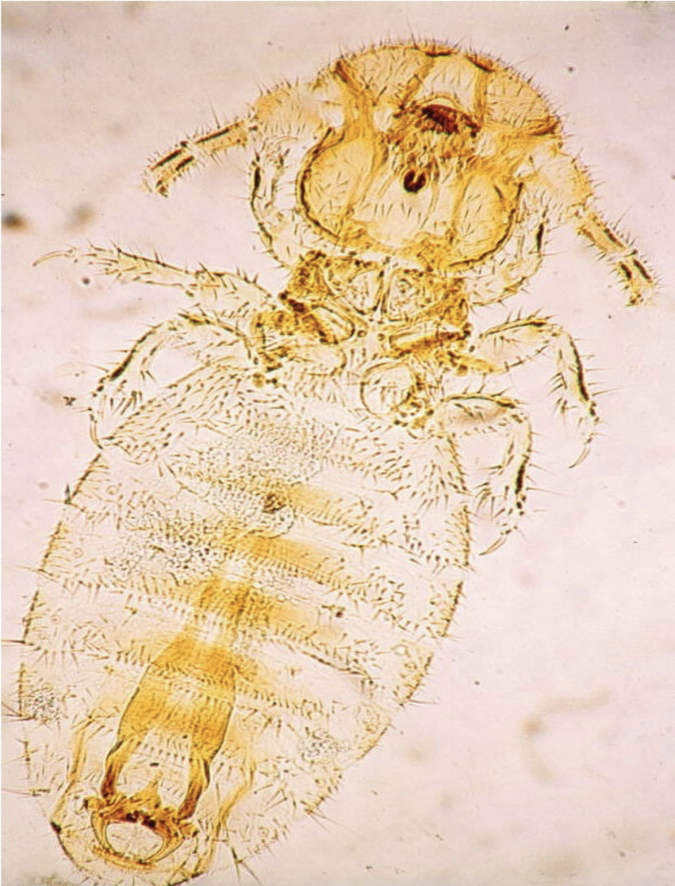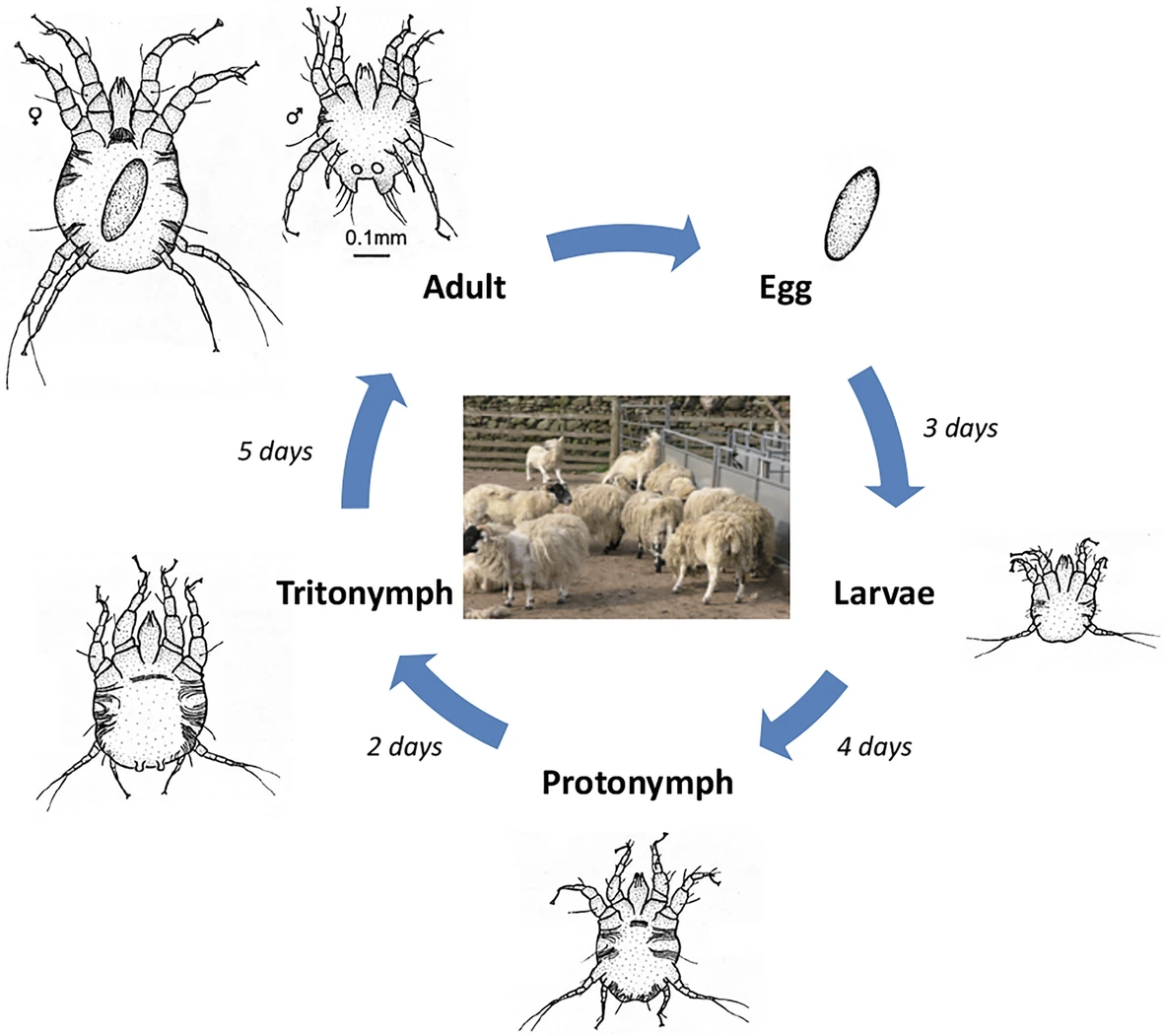Intro to Mites and Ticks of Veterinary Significance (Week 3, Mod 7)
1/11
There's no tags or description
Looks like no tags are added yet.
Name | Mastery | Learn | Test | Matching | Spaced |
|---|
No study sessions yet.
12 Terms
Ectoparasites are important causes of animal health and welfare problems because ___ (list 6)
1) They cause forms of (allergic) dermatitis associated with pruritis that is often intense
MOST important
2) Painful bite - cause irritation and restlessness (worry)
Mostly due to flies – lecture Ectoparasites : Flies of Veterinary Importance
3) Their larvae can invade the body of an animal (Myiasis) and cause tissue destruction
e.g. Blow fly strike – lecture Ectoparasites : Flies of Veterinary Importance
4. Some are obligate blood feeders and can cause anemia.
5. They are very effective at transmitting agents of infectious disease so act as vectors: mechanical, biological (For viruses see lecture Ectoparasites and other blood feeding insects as vectors for virus spread)
6. They can be difficult to control ($$)
What are the 3 primary types of dermatitis caused by ectoparasites? Which ectoparasites are each caused by?
1) FAD: Flea Allergic Dermatitis
Ctenocephalides felis/canis (papular eruption, alopecia, crusting, pruritis)
2) Pediculosis: louse infestation, cattle/sheep
e.g. Bovicola
Two different types: sucking and chewing; knowing which is which will change your tx plan
3) Mange (mites): Psoroptes ovis (sheep scab)
Sarcoptes scabei (sarcoptic mange, dogs)
Demodex canis (red mange, dogs)
What is Sheep Scab? What kind of mite is it caused by?
Caused by Psoroptes ovis → non-burrowing mite
Is an allergic dermatitis that effects sheep; a hypersensitivity reaction to mites
Highly contagious
Leads to intense pruritis (itching) →
Excoriations, serous exudate, wool loss
Itching can be so consuming that the sheep won’t eat
Can even cause seizures and death in extreme cases
Describe the pathogenesis of Sheep Scab… how would you diagnose it?
Is an allergic (type 1 hypersensitivity) reaction to P. ovis feces (contains allergens)
Generates inflammation and exudate
Exudate dries to form a scab surrounded by a MOIST BORDER and inflamed skin
Mites are active in the BORDER of the scab; population extends with the scab
SKIN SCRAPE around the EDGES of the scab would then be useful for diagnosis
What are the clinical signs of Sheep Scab?
Wet discoloured wool is first visible sign, usually over shoulders
Sheep are restless, lick, bite rub & scratch - Wool becomes ragged/stained
Large areas of wool loss along with open bleeding wounds & thickened skin
Susceptible to secondary bacterial infection
Reduced weight gains - weight loss and sometimes death
Its important to know the difference between Sheep Scab and a lice infection (B. ovis)… how does a lice infection present differently from Sheep Scab?
Lice can also cause dermatitis, fleece damage, and irritation, BUT:
No loss of body condition
Areas of bare skin UNCOMMON
Wool regrows
NO SCABS
Is often a CHRONIC condition rather than acute, like Sheep Scab
What are the physical differences between Psoroptes ovis (mites) and B. ovis (lice) for diagnosis?
Lice:
1-2 mm long
6 legs, elongated abdomen
Definite rounded head (see image)
Mites:
0.7 mm long
8 legs, rotund body, pointy head
Has a funnel-shaped sucker w/ long stalk
Look like round, white frogs

What is the life cycle of Psoroptes ovis? NEED TO KNOW
NOTE
Is entirely dependent on the sheep host, does not have an environmental stage
Therefore, can STILL BE INFECTIVE ON SHEARED WOOL FOR UP TO 15 DAYS… whether its on dirty clippers or stray wool shavings
But CANNOT be maintained off of the sheep otherwise
Life cycle:
Adult lays egg in sheep wool
3 days → hatches to larvae
4 days → becomes a protonymph
2 days → grows to Trionymph
5 days → MATURES TO ADULT

Mange is caused by Demodex mites… are these burrowing mites or non-burrowing mites? Describe their physical appearance and where they reside in the skin.
Demodex canis → BURROWING mite
Lives in sebaceous glands and hair follicles
Would need a DEEP skin scraping for diagnosis
Physical appearance:
Elongated / cigar shaped (0.2 - 0.4 mm)
8 stumpy legs at the ANTERIOR end
How is demodectic mange transmitted?
Usually transmitted from bitch to pup; requires PROLONGED contact due to mites being so deep into the dermis
Most pups will show localized mange - slight hair loss / thickened skin by 3-15 months
Is not usually itchy, just causes hair loss; can even resolve spontaneously
If not resolved on own, can used treated shampoo (benzoyl peroxide)
What is generalized demodecosis? What are the two different kinds of onset, and what are the two different kinds of presentations?
Generalized demodecosis is usually an overpopulation of demodex do to IMMUNOSUPPRESSION of the individual. Condition can either be:
Juvenile onset - an INHERETED immunodeficiency contributes to overpop.
Adult onset - P has ACQUIRED an immunosuppressive condition; demodectic mange is then secondary
Initially presents with squamous effects → alopecia, desquamation and skin thickening
But can become PUSTULAR
Bacteria invades lesions
Thickened skin with pustules
Ooze pus, blood, erythema ( called RED MANGE)
Hyperpigmentation
Results in severe disfigurement
WILL REQUIRE PROLONGED TREATMENT
When it comes to fleas, how would treatment vary from a mite infestation and why?
When there is a flea infestation, EVERYONE in the household needs to be treated
So does everything with fabric; couches, carpet, beds